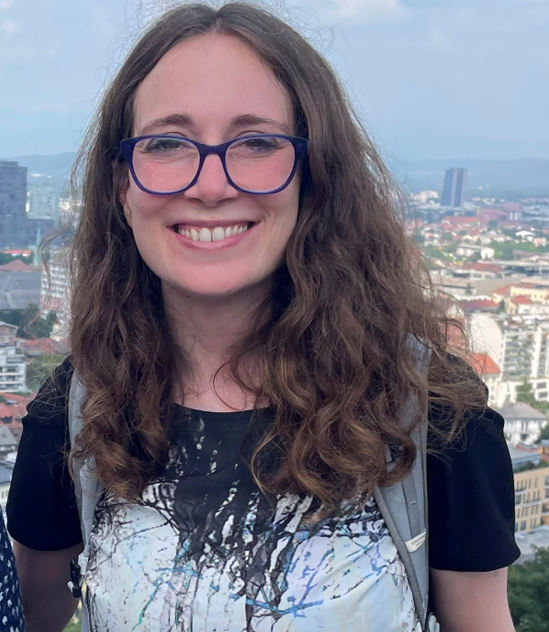Community Q&A – Tim Marston
Tim Marston is the 1st-prize winner of 2023 MATLAB Mini Hack contest. His contest entries not only showcase his MATLAB skills and creativity, but also inspire many others to create entries in the contest. We were thrilled to have a conversation with him and learn more about his story.

Tim along with a couple members of his animation development team
A: I'm an acoustician specializing in signal processing and acoustic remote sensing at the Applied Physics Laboratory, University of Washington.
A: MATLAB was one of the primary software tools used by professors to supplement their instruction at both my undergraduate (Seattle Pacific) and graduate (Penn State) institutions. It has remained my primary tool for data exploration, visualization, and algorithm development ever since.
A: I am most often using MATLAB for algorithm prototyping, much of this is related to the field of "synthetic aperture" signal processing, but it varies. This summer I have spent a significant amount of time working on an application for real-time signal processing from a 3D synthetic aperture system designed to look under the sand of the seabed for buried objects like pipes, cables, or derelict explosives (see image below). The application leverages MATLAB’s asynchronous processing tools and GPU wrappers to stream data from multiple sensors, perform some computationally intensive pre-processing, and present results to users in real-time in a way that they can interact with and make decisions from.

A: I enjoyed the 2021 and 2022 contests and learned a huge amount from them. I also enjoyed interacting with the other contestants.
A: Probably Rolling Fog. I like Rolling Fog because there was a lot of exploration involved and the results were better than I expected. For example, the cloud morphing and flowing effect from the modulation of the phase in the spatial spectrum of the generation function worked better than anticipated. Similarly, the ad-hoc method used to add glints to the clouds. I did not anticipate that the entry would garner many views.

Rolling Fog
A: Starting with a concept that I find interesting or visually attractive, then trying to create it in code.
A: It greatly varied. For example: I had been toying with algorithms for making the somewhat natural looking face in Snowfall and Waking for weeks. Others, like Icy Comet and Moonrun were kind of slapdash. During the competition I was often playing with concepts for multiple submissions at once. In the evenings I would A/B different versions for my kids and they would give me feedback and ideas. For many entries, like Ring World and Light Ripples, I would work in bits and pieces over the course of a couple days or even a week, and in total I think many of them took several hours.
A: Previously in the year I visited Greece for a conference on underwater acoustics and had the opportunity to go swimming in the Mediterranean. The water was very clear, and the beauty of the patterns of light on the seabed was striking. I would dive and watch the light ripples flutter until I could no longer hold my breath. I tried to recreate this in my entry by combining the procedural sand ripple techniques shown in some prior Mini Hack entries (loosely based on a paper by Miao, Mu and Wu, "Computer Simulation of Aeolian sand ripples and dunes", Phys. Letters A, (2001)) with Voronoi noise for the light ripples, a pretty standard approach in procedural generation. Another component was depicting the color transitions observed when you are underwater and looking toward the horizon.

Light Ripples
There were many fascinating submissions in the 2023 competition. Favorites are hard to pick, but I would say the following: for aesthetics, Rose Bouquet (@Zhaoxu Liu), Night's Lantern (@Adam Danz), and Midnattsol (@Jenny Bosten). From a coding perspective, pretty much everything by @Eric Ludlam was instructional.

Rose Bouquet by Zhaoxu Liu

Night's Lantern by Adam Danz

Midnattsol by Jenny Bosten

Will o' the Wisp by Eric Ludlam
A: For work: Specifying independent RGB values of voxels in Volshow(). Volshow is an excellent 3D rendering tool and its capability seems to be expanded every update, but I and probably many others would make extensive use of this capability if it were added.
For play: (RE: gaming), detection of multiple simultaneous keyboard inputs.
A: Leverage the various "on-ramps" MATLAB has been developing, and learn it as a programming language, not just a tool to solve engineering math problems. Secondly, effective conveyance of information and results is extremely important in any context. Think about the ideal way to communicate your results if you had infinite resources and skill and use that as your target.
A: I have 8 children by the same beautiful woman and I love doing things with them. You will see their influence in many of my submissions. I love to grow fruit, especially fig trees, which do surprisingly well in the cold and wet Pacific Northwest. I am active in my church and love to read. My favorite author is probably C.S. Lewis, we are finishing up the Narnia series with my kids right now and I've read his lesser-known Space Trilogy maybe 8 or 9 times. It gets better each time.








Comments
To leave a comment, please click here to sign in to your MathWorks Account or create a new one.